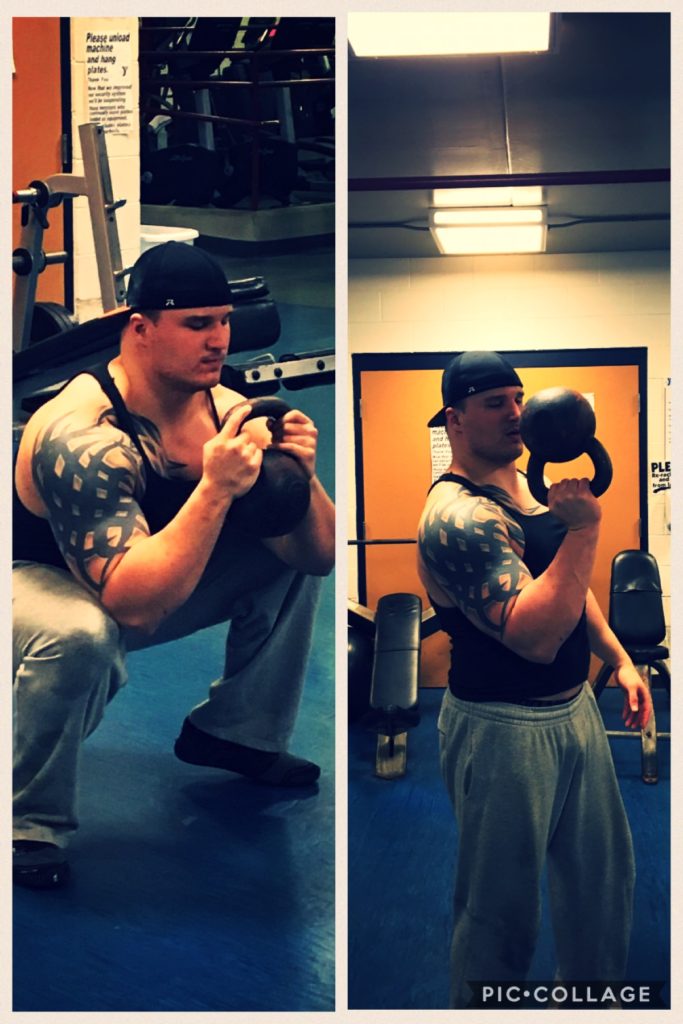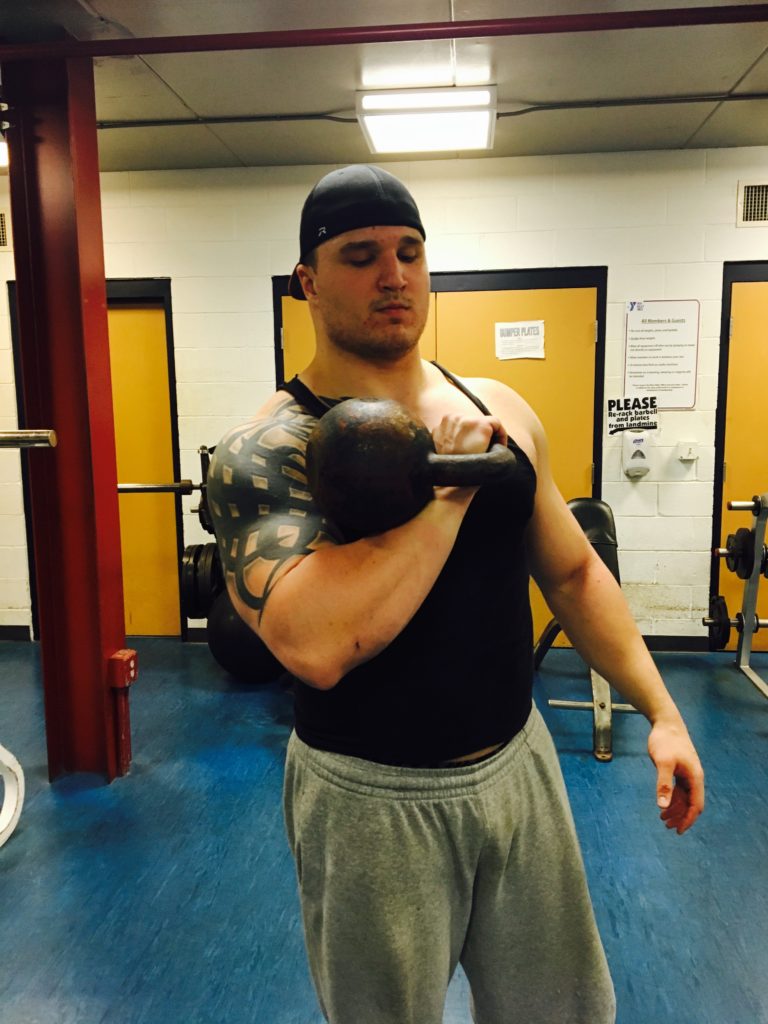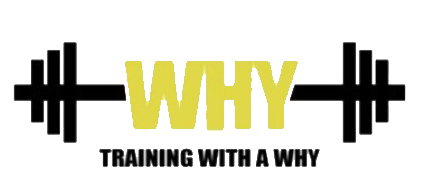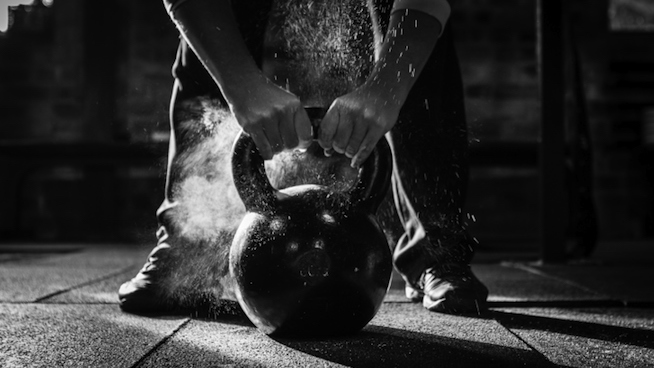It’s a Kettlebell
One of the most underutilized tools in training is the kettlebell. I love using kettlebells in my own training, and it and the barbell are my favorite tools to use with my clients. Over the last decade or so kettlebells have become synonymous with CrossFit. Few things get under my skin as bad as when I show someone a kettlebell and their response is, “oh, CrossFit.” The kettlebell has been around since the 1700s and CrossFit has been around since the year 2000.
Many people see the kettlebell as something CrossFit uses and nothing else. People do not realize the benefits the kettlebell offers to people no matter their reason for training. I use kettlebells when training athletes, people rehabbing injuries, and the general population just looking to get healthier. I hope that this article will shed some light on the benefits of kettlebells and why people with all types of goals should consider adding kettlebell training to their regimen.
Strength
Kettlebells are great way to build strength. With kettlebells, you can become stronger in the squat, pressing, and hinging movements in a variety of ways. This variation allows you to test movements in a way that is hard to do with other tools, including barbells. By testing these movements in different ways, you can find weak points that could be holding you back from making strength gains. For example, you can perform the squat by holding a kettlebell in a goblet position (as pictured below), a single rack position, and a double rack position. Each of these offer different benefits that help improve your squat overall. The same can be said for presses by pressing kettlebells overhead in a strict, push press, or bottoms up position as pictured below.
Lastly, two great exercises for the hip hinge using kettlebells are the deadlift and the swing. Using a kettlebell for the deadlift can be a strength exercise for novice lifters or for rehabbing injuries and is also a great way to teach the hip hinge in a safe manner. The kettlebell swing is a dynamic exercise that offers a lot of different benefits such as flexibility, power, and conditioning. You will read more about the swing in the following paragraphs. What is important to remember is that you can do these movements with very heavy kettlebells. This will obviously make you stronger directly but it will also carry over to heavier barbell lifts. Training with kettlebells enables you to use heavy weight unilaterally, meaning one arm at a time, and this will help with any strength imbalances that may be holding you back.

Pictured above is the Goblet Squat (Left) and the Bottoms up Position (Right)
Conditioning
I hate conditioning. It’s no secret to those close to me that I don’t do a lot, if any, conditioning in the traditional sense. You probably won’t see me out jogging around town anytime soon. However, as much as it pains me to say it, I know conditioning is a necessary evil. I try my best to avoid it as much as possible, at least traditional conditioning anyhow. So, I find different ways to implement conditioning into my training. Kettlebells are one of my favorite ways to do this. The previously mentioned kettlebell swings will get you huffing and puffing like few exercises can. Don’t believe me? Go ahead and do twenty-five of them in a row. Then after you catch your breath come back and tell me that didn’t get your heart rate up.
Carries are also a great conditioning tool. I could have put carries in the strength section also. This exercises is exactly how it sounds. You carry heavy weight for either distance or time. This will challenge you in more way than one. Heavy carries will build grip strength, build a bigger upper back, and keep your shoulders healthy, but you may be surprised how out of breath you are when you finally set the weight down. I’d much rather go for a walk carrying kettlebells then go for a run around my neighborhood. In fact, to this day the most humbling feat I’ve ever attempted was carrying two heavy kettlebells through town and back. It took roughly an hour to complete and I was surprised and embarrassed about how exhausted and out of breath I was. Now, before you go telling everyone you know that I said all you have to do is swing and carry a kettlebell and you will be able to run a marathon, conditioning in this section referrers to general conditioning. If you want to be able to run a 5k, you still must go out and run.
Flexibility
The flexibility you can gain from training with kettlebells is probably my favorite reason for using them. The way the kettlebell fits around your hand and rests against your arm in what is called the rack position (as pictured below) allows for freedom of movement that you can’t get with a dumbbell. The kettlebell becomes an extension of your arm, it becomes a part of your body, allowing for natural movement to occur. This freedom of movement that a kettlebell allows is why it is a great tool for improving flexibility. You can move naturally and improve flexibility while performing “strength” movements. For example, by holding the kettlebell in the rack position and pressing it overhead, your shoulder can move freely and naturally as the weight travels overhead. At the top of the movement you can focus on placing your extended arm over your head utilizing its full range of motion instead of the arm being too far forward and sacrificing the end range of movement which is commonly seen. The previously mentioned goblet squat is also a great example as it is an easier and safer way to teach the squat than with the bar. It allows you to practice achieving great depth in the squat, gaining flexibility in your hips. Also, there are many corrective type exercises that are great for rehabbing or preventing injuries. There will be an article coming soon on how to use kettlebells for injury prevention.

Pictured above is the Rack Position
Not CrossFit
The strength, conditioning, and flexibility benefits of kettlebells are priceless. All three are a great reason to include kettlebells into your programs. This article didn’t even go into detail about the corrective exercise benefits or the teaching benefits of kettlebells. Rehab or injury prevention for any type of person could have also been a section in this article and will be an article in the future. I touched a little on the teaching benefits of kettlebells when discussing the deadlift and squat and it really is a great tool for teaching the basic movements in a safe manner. I hope that this article shed some light on the benefits of kettlebells and maybe next time you see one you won’t automatically think CrossFit! Please subscribe to this site and share this article so that I can continue to reach more people.


